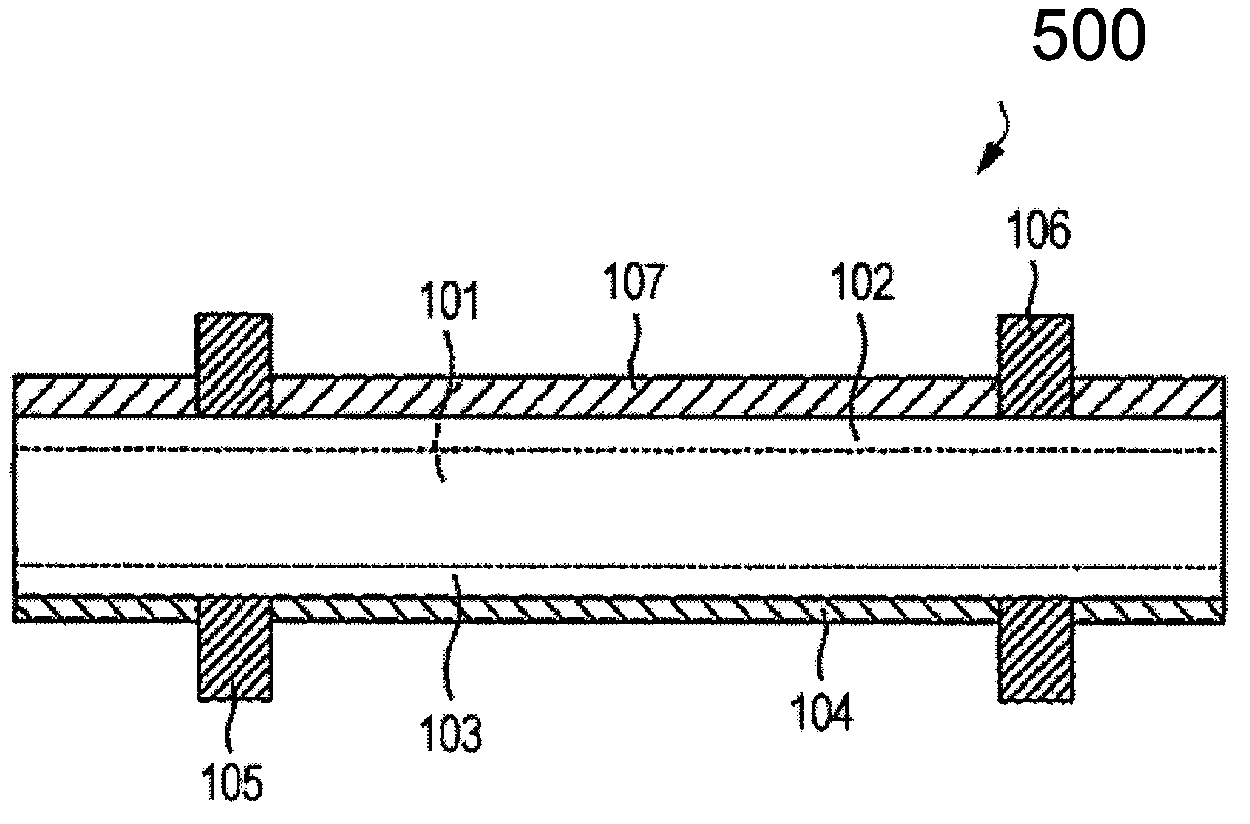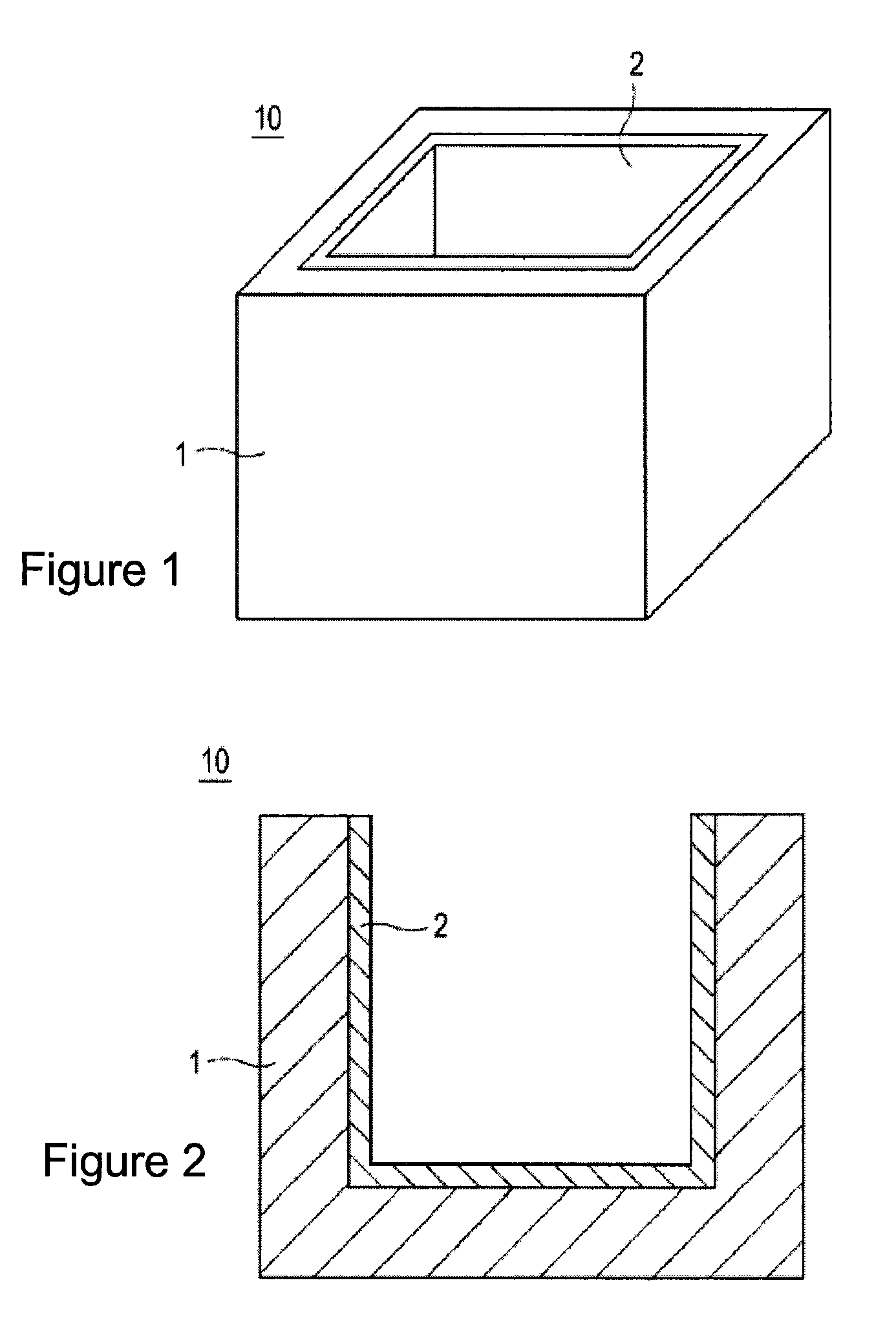Mold Forming and Molding Method
- Summary
- Abstract
- Description
- Claims
- Application Information
AI Technical Summary
Benefits of technology
Problems solved by technology
Method used
Image
Examples
modified embodiment
[0109]FIGS. 6A-6C are illustrations of schematic views of mold 10 according to one or more embodiments of the disclosure. The mold 10 may comprise the mold base 1, the releasing layer 2, a separating layer 3, and contain a silicon melt 4. FIGS. 6A-6C may share the same parameters, definition and functionality as FIGS. 1-2. Therefore, these definitions and the functionalities are not redundantly explained herein.
[0110]FIG. 6A is a schematic section view illustration of a mold configuration according to an embodiment of the disclosure. The mold base 1 may be composed of a carbon fiber reinforced material. The separating layer 3 is located between the mold base 1 and the releasing layer 2. Notably, the separating layer 3 is not formed in an upper portion of a mold side wall 10a where a silicon melt does not reach (a portion located at a higher level than the surface of a silicon melt). Although the separating layer 3 is not formed in the portion higher than the surface of the silicon m...
example 1
[0118]Three slurries were prepared under different disintegration treatment conditions and releasing layers were formed with the respective slurries to provide three molds.
[0119]A high purity silicon nitride powder was prepared that was obtained by an imide decomposition method and had an average particle size of about 0.5 μm. The powder was subjected to a surface oxidation treatment by heating the powder at about 1000° C. for about 5 hours with an electric furnace. In an example, SN-E10 manufactured by Ube Industries, Ltd is used as the high purity silicon nitride powder,
[0120]The resultant silicon nitride powder and an about 8% aqueous solution of polyvinyl alcohol were mixed with a blade mixer to prepare a slurry. The mixing ratio of the aqueous solution of polyvinyl alcohol to the silicon nitride powder by weight was about 0.48.
[0121]Specifically, the slurry was prepared by the first agitation step in which the aqueous solution of polyvinyl alcohol in 9 / 10 of the total amount of...
example 2
[0139]For the second example, three releasing agent slurries E, F, and G were prepared by respectively adding silicon dioxide powder in different weight ratios to the releasing agent slurry A prepared in the same manner as in example 1. For the releasing agent slurry E, the ratio of silicon nitride powder to silicon dioxide powder was 8 to 2. For the releasing agent slurry F, the ratio of silicon nitride powder to silicon dioxide powder was 6 to 4. For the releasing agent slurry G, the ratio of silicon nitride powder to silicon dioxide powder was 5 to 5.
[0140]Silicon ingots were produced with these three releasing agent slurries E, F, and G as in example 1. These silicon ingots were sliced into wafers. These wafers were processed into solar cell elements. In the production of the silicon ingots, the wafers, and the solar cell elements, the occurrence of adhesion between the mold bases and the releasing layers was detected, and the proportion of the wafers rejected because of foreign...
PUM
| Property | Measurement | Unit |
|---|---|---|
| Fraction | aaaaa | aaaaa |
| Percent by mass | aaaaa | aaaaa |
| Viscosity | aaaaa | aaaaa |
Abstract
Description
Claims
Application Information
 Login to View More
Login to View More - R&D
- Intellectual Property
- Life Sciences
- Materials
- Tech Scout
- Unparalleled Data Quality
- Higher Quality Content
- 60% Fewer Hallucinations
Browse by: Latest US Patents, China's latest patents, Technical Efficacy Thesaurus, Application Domain, Technology Topic, Popular Technical Reports.
© 2025 PatSnap. All rights reserved.Legal|Privacy policy|Modern Slavery Act Transparency Statement|Sitemap|About US| Contact US: help@patsnap.com



